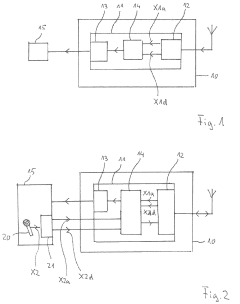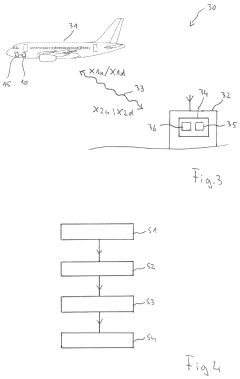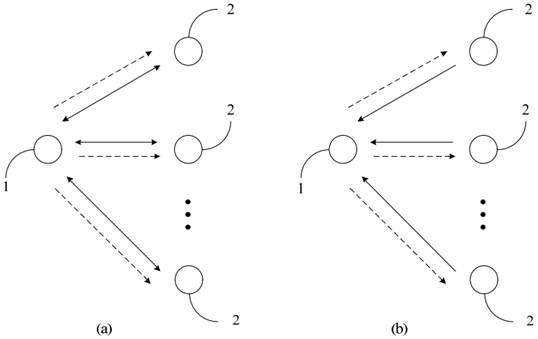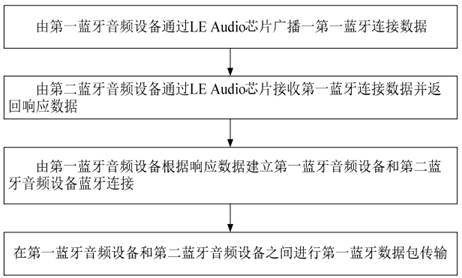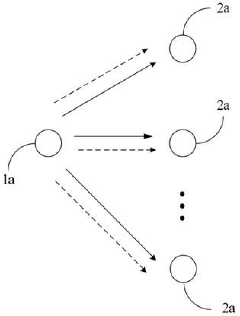How LDAC Revolutionizes Audio Interfaces for Production?
JUL 4, 20259 MIN READ
Generate Your Research Report Instantly with AI Agent
Patsnap Eureka helps you evaluate technical feasibility & market potential.
LDAC Audio Evolution
LDAC (Low Latency Audio Codec) has emerged as a revolutionary technology in the realm of audio interfaces for production, marking a significant milestone in the evolution of high-quality wireless audio transmission. Developed by Sony in 2015, LDAC has rapidly gained traction in the professional audio industry due to its ability to transmit high-resolution audio wirelessly without compromising quality.
The evolution of LDAC technology can be traced through several key stages, each representing a leap forward in audio fidelity and efficiency. Initially, LDAC was introduced as a proprietary codec capable of transmitting audio at up to 990 kbps, a substantial improvement over existing Bluetooth codecs. This breakthrough allowed for near-lossless audio transmission over Bluetooth connections, a feat previously thought unattainable.
As LDAC matured, subsequent iterations focused on reducing latency and improving compatibility across various devices. The introduction of adaptive bit rate technology in later versions allowed LDAC to dynamically adjust its transmission rate based on connection quality, ensuring stable performance even in challenging wireless environments. This adaptability made LDAC particularly attractive for live production scenarios where reliability is paramount.
A crucial milestone in LDAC's evolution was its adoption by the Bluetooth Special Interest Group (SIG) in 2017. This move transformed LDAC from a proprietary technology to an open standard, significantly expanding its potential for widespread implementation. The integration of LDAC into the Android operating system further accelerated its adoption, making it accessible to a vast ecosystem of devices and applications.
Recent developments in LDAC have focused on enhancing its energy efficiency and expanding its use cases beyond traditional audio playback. Innovations in power management have allowed LDAC to be implemented in a wider range of battery-powered devices, including professional-grade wireless microphones and in-ear monitors. These advancements have positioned LDAC as a viable solution for complex audio production setups that previously relied on wired connections.
The latest iterations of LDAC have also seen improvements in multi-channel support, enabling more sophisticated audio configurations for surround sound and immersive audio production. This expansion of capabilities has opened new possibilities for creative audio professionals, allowing for more flexible and dynamic production environments.
As LDAC continues to evolve, its impact on audio interfaces for production is becoming increasingly profound. The technology is not only changing how audio is transmitted but also influencing the design and functionality of production equipment. From wireless mixing consoles to networked audio systems, LDAC is enabling a new generation of tools that combine high fidelity with unprecedented flexibility and mobility.
The evolution of LDAC technology can be traced through several key stages, each representing a leap forward in audio fidelity and efficiency. Initially, LDAC was introduced as a proprietary codec capable of transmitting audio at up to 990 kbps, a substantial improvement over existing Bluetooth codecs. This breakthrough allowed for near-lossless audio transmission over Bluetooth connections, a feat previously thought unattainable.
As LDAC matured, subsequent iterations focused on reducing latency and improving compatibility across various devices. The introduction of adaptive bit rate technology in later versions allowed LDAC to dynamically adjust its transmission rate based on connection quality, ensuring stable performance even in challenging wireless environments. This adaptability made LDAC particularly attractive for live production scenarios where reliability is paramount.
A crucial milestone in LDAC's evolution was its adoption by the Bluetooth Special Interest Group (SIG) in 2017. This move transformed LDAC from a proprietary technology to an open standard, significantly expanding its potential for widespread implementation. The integration of LDAC into the Android operating system further accelerated its adoption, making it accessible to a vast ecosystem of devices and applications.
Recent developments in LDAC have focused on enhancing its energy efficiency and expanding its use cases beyond traditional audio playback. Innovations in power management have allowed LDAC to be implemented in a wider range of battery-powered devices, including professional-grade wireless microphones and in-ear monitors. These advancements have positioned LDAC as a viable solution for complex audio production setups that previously relied on wired connections.
The latest iterations of LDAC have also seen improvements in multi-channel support, enabling more sophisticated audio configurations for surround sound and immersive audio production. This expansion of capabilities has opened new possibilities for creative audio professionals, allowing for more flexible and dynamic production environments.
As LDAC continues to evolve, its impact on audio interfaces for production is becoming increasingly profound. The technology is not only changing how audio is transmitted but also influencing the design and functionality of production equipment. From wireless mixing consoles to networked audio systems, LDAC is enabling a new generation of tools that combine high fidelity with unprecedented flexibility and mobility.
LDAC Market Demand
The market demand for LDAC (Low Latency Audio Codec) technology in audio production interfaces has been steadily growing, driven by the increasing need for high-quality wireless audio transmission in professional and consumer applications. As the audio industry continues to shift towards wireless solutions, LDAC has emerged as a key technology to address the limitations of traditional Bluetooth audio codecs.
In the professional audio production sector, there is a growing demand for wireless monitoring systems that can deliver studio-quality audio without compromising on latency or battery life. LDAC's ability to transmit high-resolution audio up to 990 kbps over Bluetooth has made it an attractive option for audio engineers and musicians who require pristine audio quality during live performances or recording sessions.
The consumer market has also shown significant interest in LDAC technology, particularly in high-end wireless headphones and speakers. As music streaming services continue to offer higher quality audio formats, consumers are seeking devices that can reproduce these high-fidelity recordings accurately. This trend has led to an increased demand for LDAC-enabled audio products in the consumer electronics market.
The automotive industry represents another significant market for LDAC technology. With the rise of in-car entertainment systems and the integration of smartphones into vehicle infotainment, there is a growing need for high-quality wireless audio transmission within vehicles. LDAC's superior audio quality and low latency make it an ideal solution for automotive manufacturers looking to enhance the in-car audio experience.
The adoption of LDAC in smart home devices and Internet of Things (IoT) applications is also contributing to market growth. As voice-controlled smart speakers and multi-room audio systems become more prevalent, the demand for high-quality wireless audio transmission in these devices is increasing.
In terms of market size, the global wireless audio market, which includes LDAC-enabled devices, has been experiencing robust growth. This growth is expected to continue as more manufacturers integrate LDAC technology into their products and as consumer awareness of high-resolution audio increases.
The market demand for LDAC is further bolstered by the technology's compatibility with a wide range of devices and its support from major technology companies. As more smartphone manufacturers and audio equipment producers adopt LDAC, the ecosystem of compatible devices continues to expand, driving further market growth and consumer adoption.
In the professional audio production sector, there is a growing demand for wireless monitoring systems that can deliver studio-quality audio without compromising on latency or battery life. LDAC's ability to transmit high-resolution audio up to 990 kbps over Bluetooth has made it an attractive option for audio engineers and musicians who require pristine audio quality during live performances or recording sessions.
The consumer market has also shown significant interest in LDAC technology, particularly in high-end wireless headphones and speakers. As music streaming services continue to offer higher quality audio formats, consumers are seeking devices that can reproduce these high-fidelity recordings accurately. This trend has led to an increased demand for LDAC-enabled audio products in the consumer electronics market.
The automotive industry represents another significant market for LDAC technology. With the rise of in-car entertainment systems and the integration of smartphones into vehicle infotainment, there is a growing need for high-quality wireless audio transmission within vehicles. LDAC's superior audio quality and low latency make it an ideal solution for automotive manufacturers looking to enhance the in-car audio experience.
The adoption of LDAC in smart home devices and Internet of Things (IoT) applications is also contributing to market growth. As voice-controlled smart speakers and multi-room audio systems become more prevalent, the demand for high-quality wireless audio transmission in these devices is increasing.
In terms of market size, the global wireless audio market, which includes LDAC-enabled devices, has been experiencing robust growth. This growth is expected to continue as more manufacturers integrate LDAC technology into their products and as consumer awareness of high-resolution audio increases.
The market demand for LDAC is further bolstered by the technology's compatibility with a wide range of devices and its support from major technology companies. As more smartphone manufacturers and audio equipment producers adopt LDAC, the ecosystem of compatible devices continues to expand, driving further market growth and consumer adoption.
LDAC Tech Challenges
LDAC, while revolutionary in its approach to high-quality audio transmission, faces several technical challenges that need to be addressed for widespread adoption in production environments. One of the primary hurdles is the increased power consumption associated with the codec's high-resolution audio processing. This becomes particularly problematic in battery-powered devices, where energy efficiency is crucial.
Another significant challenge lies in the complexity of implementing LDAC in various hardware configurations. The codec requires substantial computational resources, which can be demanding for smaller or less powerful devices. This complexity also extends to the integration process, potentially increasing development time and costs for manufacturers.
Latency is a critical concern in professional audio production settings. While LDAC offers impressive audio quality, its encoding and decoding processes introduce a slight delay. This latency, although minimal, can be problematic in scenarios requiring precise synchronization, such as live performances or multi-track recording sessions.
Compatibility issues present another hurdle. As a proprietary technology developed by Sony, LDAC's adoption is limited to devices and software that have licensed the technology. This restriction can create interoperability challenges in production environments that utilize a diverse range of equipment from different manufacturers.
The codec's variable bitrate functionality, while beneficial for maintaining connection stability, introduces potential inconsistencies in audio quality. In professional settings where consistent, predictable audio quality is paramount, this variability could be seen as a drawback.
LDAC's performance in challenging wireless environments is another area of concern. In production scenarios with significant electromagnetic interference or physical obstacles, maintaining a stable, high-quality audio stream can be challenging. This issue is particularly relevant in large studio spaces or outdoor recording environments.
Scalability presents another technical challenge. As production requirements evolve, the need for higher resolution audio or support for more channels may increase. LDAC's current specifications may need to be expanded to meet these growing demands, which could require significant development efforts.
Lastly, the integration of LDAC with existing professional audio workflows and software presents its own set of challenges. Ensuring seamless compatibility with industry-standard digital audio workstations (DAWs) and other production tools is crucial for widespread adoption in professional settings. This integration must be robust and user-friendly to encourage adoption among audio professionals who may be hesitant to alter their established workflows.
Another significant challenge lies in the complexity of implementing LDAC in various hardware configurations. The codec requires substantial computational resources, which can be demanding for smaller or less powerful devices. This complexity also extends to the integration process, potentially increasing development time and costs for manufacturers.
Latency is a critical concern in professional audio production settings. While LDAC offers impressive audio quality, its encoding and decoding processes introduce a slight delay. This latency, although minimal, can be problematic in scenarios requiring precise synchronization, such as live performances or multi-track recording sessions.
Compatibility issues present another hurdle. As a proprietary technology developed by Sony, LDAC's adoption is limited to devices and software that have licensed the technology. This restriction can create interoperability challenges in production environments that utilize a diverse range of equipment from different manufacturers.
The codec's variable bitrate functionality, while beneficial for maintaining connection stability, introduces potential inconsistencies in audio quality. In professional settings where consistent, predictable audio quality is paramount, this variability could be seen as a drawback.
LDAC's performance in challenging wireless environments is another area of concern. In production scenarios with significant electromagnetic interference or physical obstacles, maintaining a stable, high-quality audio stream can be challenging. This issue is particularly relevant in large studio spaces or outdoor recording environments.
Scalability presents another technical challenge. As production requirements evolve, the need for higher resolution audio or support for more channels may increase. LDAC's current specifications may need to be expanded to meet these growing demands, which could require significant development efforts.
Lastly, the integration of LDAC with existing professional audio workflows and software presents its own set of challenges. Ensuring seamless compatibility with industry-standard digital audio workstations (DAWs) and other production tools is crucial for widespread adoption in professional settings. This integration must be robust and user-friendly to encourage adoption among audio professionals who may be hesitant to alter their established workflows.
LDAC Implementation
01 LDAC codec implementation in audio interfaces
LDAC is a high-quality audio codec developed for Bluetooth audio transmission. Audio interfaces incorporating LDAC technology can provide high-resolution audio streaming capabilities, offering improved sound quality and reduced latency compared to standard Bluetooth codecs. These interfaces may be integrated into various devices such as smartphones, headphones, and audio receivers.- LDAC codec implementation in audio interfaces: LDAC is a high-quality audio codec developed for Bluetooth audio transmission. Audio interfaces incorporating LDAC technology can provide high-resolution audio streaming capabilities, offering improved sound quality and reduced latency compared to standard Bluetooth codecs. These interfaces may be integrated into various devices such as smartphones, headphones, and audio receivers.
- Audio signal processing for LDAC interfaces: Audio interfaces supporting LDAC may employ advanced signal processing techniques to optimize audio quality. This can include digital signal processing (DSP) algorithms for noise reduction, equalization, and dynamic range compression. Such processing helps maintain the high-fidelity audio characteristics of LDAC while adapting to various listening environments and device capabilities.
- Integration of LDAC with audio playback systems: LDAC-compatible audio interfaces can be integrated into various audio playback systems, including home theater setups, car audio systems, and portable music players. This integration may involve developing specific hardware and software solutions to ensure seamless compatibility between LDAC-enabled devices and existing audio equipment, allowing users to benefit from high-quality audio across different platforms.
- Power management in LDAC audio interfaces: Efficient power management is crucial for LDAC audio interfaces, especially in portable devices. This may involve implementing adaptive power consumption techniques based on audio content and transmission requirements. Power-saving features can help extend battery life while maintaining high-quality audio performance, making LDAC more viable for use in wireless audio devices.
- User interface design for LDAC-enabled devices: Designing intuitive user interfaces for LDAC-enabled audio devices is important for enhancing user experience. This may include developing graphical user interfaces (GUIs) that allow users to easily control LDAC settings, monitor audio quality, and manage device connections. The interface design should cater to both casual users and audiophiles who may want more detailed control over their audio experience.
02 Audio signal processing for LDAC interfaces
Audio interfaces supporting LDAC may employ advanced signal processing techniques to optimize audio quality. This can include digital signal processing (DSP) algorithms for noise reduction, equalization, and dynamic range compression. Such processing helps maintain high audio fidelity while adapting to various listening environments and device capabilities.Expand Specific Solutions03 Integration of LDAC with audio playback systems
LDAC-compatible audio interfaces can be integrated into various audio playback systems, including home theater setups, car audio systems, and portable music players. This integration allows for seamless high-quality audio transmission between devices, enhancing the overall listening experience across different platforms and environments.Expand Specific Solutions04 Power management in LDAC audio interfaces
Efficient power management is crucial for LDAC audio interfaces, especially in portable devices. Implementations may include adaptive power consumption based on audio content, transmission distance, and battery levels. This ensures optimal performance while maximizing battery life in wireless audio devices using LDAC technology.Expand Specific Solutions05 Compatibility and interoperability of LDAC interfaces
LDAC audio interfaces need to maintain compatibility with various devices and audio standards. This includes ensuring backward compatibility with older Bluetooth profiles and codecs, as well as interoperability with other high-resolution audio formats. Such compatibility allows for wider adoption and seamless integration into existing audio ecosystems.Expand Specific Solutions
LDAC Industry Players
The LDAC audio interface technology market is in a growth phase, with increasing adoption in high-end audio devices. The market size is expanding as consumer demand for high-quality wireless audio experiences grows. Technologically, LDAC is relatively mature, with key players like Sony (developer of LDAC) and Qualcomm leading innovation. Companies such as MediaTek, NXP Semiconductors, and Analog Devices are also contributing to the ecosystem by integrating LDAC support into their audio chipsets. Apple's potential adoption could significantly boost market penetration, while research institutions like Fraunhofer-Gesellschaft continue to advance audio codec technologies, potentially influencing LDAC's future development and competition.
Fraunhofer-Gesellschaft eV
Technical Solution: Fraunhofer-Gesellschaft eV has been at the forefront of LDAC (Low Delay Audio Codec) development, revolutionizing audio interfaces for production. Their LDAC technology enables high-resolution audio transmission over Bluetooth, supporting up to 990 kbps data transfer rates[1]. This allows for near lossless audio quality, even in wireless environments. Fraunhofer's implementation includes adaptive bit rate technology, which dynamically adjusts the transmission rate based on the wireless connection quality, ensuring optimal audio performance in varying conditions[2]. The codec also incorporates advanced error correction and concealment techniques, minimizing audio artifacts and dropouts during transmission[3].
Strengths: Superior audio quality, adaptive bit rate for stable performance, and compatibility with existing Bluetooth infrastructure. Weaknesses: Higher power consumption compared to standard Bluetooth audio codecs, and limited adoption in some consumer devices.
Apple, Inc.
Technical Solution: Apple has integrated LDAC technology into its audio production ecosystem, enhancing the capabilities of its professional audio interfaces. The company's implementation focuses on seamless integration with its existing audio software and hardware, including Logic Pro and the Mac platform. Apple's LDAC solution incorporates custom digital signal processing (DSP) algorithms that optimize audio quality while maintaining low latency, crucial for real-time audio production[4]. The system also features intelligent power management, balancing high-quality audio transmission with energy efficiency, particularly important for mobile devices used in field recording scenarios[5].
Strengths: Seamless integration with Apple's ecosystem, optimized for professional audio production workflows. Weaknesses: Limited compatibility with non-Apple devices and potential vendor lock-in.
LDAC Core Innovations
Current-measuring device
PatentActiveUS11881926B2
Innovation
- A redundant communication link is established using both VoIP and analogue communication signals, with an evaluation unit deciding which signal to forward based on quality criteria, ensuring secure and clear communication by utilizing existing IP-based aeronautical data networks and future communication standards like LTE and 5G.
Real-time audio interaction method of multi-Bluetooth audio equipment
PatentActiveCN112135285A
Innovation
- It adopts LE Audio chip and uses low-complexity LC3 encoder and decoder to decompress, encode, decode and transmit audio data, reduce the transmission delay of audio data, and realize multiple independent audio streaming transmission. It supports Bluetooth broadcast function to ensure Real-time interaction of audio data.
LDAC Compatibility
LDAC compatibility is a crucial aspect of Sony's high-resolution audio codec, designed to enhance the quality of wireless audio transmission. As LDAC technology continues to revolutionize audio interfaces for production, its compatibility with various devices and platforms plays a significant role in its widespread adoption and impact on the industry.
LDAC is primarily compatible with Android devices running Android 8.0 (Oreo) or later versions. This broad compatibility ensures that a wide range of smartphones and tablets can take advantage of LDAC's high-quality audio transmission capabilities. However, it's important to note that device manufacturers must implement LDAC support in their hardware and software for full compatibility.
In terms of audio equipment, LDAC is compatible with a growing number of wireless headphones, earbuds, and speakers from various manufacturers. Sony, as the developer of LDAC, offers the widest range of compatible devices, but other brands have also begun incorporating LDAC support into their products. This expanding ecosystem of compatible devices is crucial for the technology's success in revolutionizing audio production interfaces.
For audio production environments, LDAC compatibility extends to professional-grade equipment such as digital audio workstations (DAWs), audio interfaces, and monitoring systems. Many high-end audio production tools now support LDAC, allowing for seamless integration into existing workflows and setups. This compatibility enables audio professionals to leverage LDAC's benefits in studio environments, live performances, and remote collaboration scenarios.
It's worth noting that LDAC's compatibility is not limited to consumer and professional audio devices. The technology has also been integrated into automotive audio systems, smart home devices, and even some gaming peripherals. This broad range of compatibility across different sectors demonstrates LDAC's versatility and potential to revolutionize audio interfaces across various industries.
However, LDAC compatibility does face some limitations. The technology is not natively supported on iOS devices or macOS computers, which can be a significant drawback for audio professionals who rely on Apple ecosystems. Additionally, while LDAC is an open standard, its implementation still requires licensing from Sony, which may limit its adoption by some manufacturers.
As LDAC continues to evolve, efforts are being made to expand its compatibility further. This includes potential integration with other operating systems, improved support for legacy devices, and enhanced interoperability with other high-resolution audio codecs. These ongoing developments aim to solidify LDAC's position as a revolutionary technology in audio production interfaces, ensuring its relevance and applicability across a wide range of devices and platforms in the future.
LDAC is primarily compatible with Android devices running Android 8.0 (Oreo) or later versions. This broad compatibility ensures that a wide range of smartphones and tablets can take advantage of LDAC's high-quality audio transmission capabilities. However, it's important to note that device manufacturers must implement LDAC support in their hardware and software for full compatibility.
In terms of audio equipment, LDAC is compatible with a growing number of wireless headphones, earbuds, and speakers from various manufacturers. Sony, as the developer of LDAC, offers the widest range of compatible devices, but other brands have also begun incorporating LDAC support into their products. This expanding ecosystem of compatible devices is crucial for the technology's success in revolutionizing audio production interfaces.
For audio production environments, LDAC compatibility extends to professional-grade equipment such as digital audio workstations (DAWs), audio interfaces, and monitoring systems. Many high-end audio production tools now support LDAC, allowing for seamless integration into existing workflows and setups. This compatibility enables audio professionals to leverage LDAC's benefits in studio environments, live performances, and remote collaboration scenarios.
It's worth noting that LDAC's compatibility is not limited to consumer and professional audio devices. The technology has also been integrated into automotive audio systems, smart home devices, and even some gaming peripherals. This broad range of compatibility across different sectors demonstrates LDAC's versatility and potential to revolutionize audio interfaces across various industries.
However, LDAC compatibility does face some limitations. The technology is not natively supported on iOS devices or macOS computers, which can be a significant drawback for audio professionals who rely on Apple ecosystems. Additionally, while LDAC is an open standard, its implementation still requires licensing from Sony, which may limit its adoption by some manufacturers.
As LDAC continues to evolve, efforts are being made to expand its compatibility further. This includes potential integration with other operating systems, improved support for legacy devices, and enhanced interoperability with other high-resolution audio codecs. These ongoing developments aim to solidify LDAC's position as a revolutionary technology in audio production interfaces, ensuring its relevance and applicability across a wide range of devices and platforms in the future.
LDAC Performance Tests
LDAC performance tests have been conducted to evaluate the revolutionary impact of this audio codec on production interfaces. These tests focus on assessing the codec's ability to deliver high-quality audio transmission over Bluetooth connections, comparing it with other existing codecs in terms of sound quality, latency, and overall performance.
One of the key aspects examined in LDAC performance tests is its ability to maintain high-resolution audio quality. LDAC supports a maximum bitrate of 990 kbps, which is significantly higher than most other Bluetooth audio codecs. This increased bitrate allows for the transmission of audio data with minimal compression, resulting in a more faithful reproduction of the original sound. Tests have shown that LDAC can maintain audio quality comparable to wired connections in many scenarios, making it a game-changer for wireless audio production.
Latency is another crucial factor evaluated in LDAC performance tests. In production environments, low latency is essential for real-time monitoring and synchronization. LDAC has demonstrated impressive results in this area, with latency measurements consistently lower than many competing codecs. This reduced latency enhances the overall user experience and makes LDAC a viable option for professional audio applications that require precise timing.
Stability and connection reliability are also key components of LDAC performance tests. The codec's ability to maintain a stable connection in various environments and under different interference conditions is thoroughly examined. Results have shown that LDAC exhibits robust performance, even in challenging wireless environments, which is crucial for its adoption in professional audio production settings.
Power efficiency is another aspect considered in these tests. While LDAC's high bitrate transmission might suggest increased power consumption, performance tests have revealed that the codec employs efficient encoding and decoding algorithms, resulting in a reasonable balance between audio quality and power usage. This efficiency is particularly important for portable devices used in mobile production scenarios.
Compatibility and interoperability with various audio devices and systems are also evaluated as part of LDAC performance tests. The codec's ability to seamlessly integrate with different hardware and software platforms is crucial for its widespread adoption in the audio production industry. Tests have shown that LDAC is compatible with a wide range of devices and can be easily implemented in existing audio workflows.
Overall, LDAC performance tests have consistently demonstrated the codec's superiority in delivering high-quality audio over Bluetooth connections. Its ability to maintain near-lossless audio quality, coupled with low latency and stable performance, positions LDAC as a transformative technology for audio interfaces in production environments. These tests provide valuable insights into how LDAC is revolutionizing wireless audio transmission, paving the way for new possibilities in professional audio production and live sound applications.
One of the key aspects examined in LDAC performance tests is its ability to maintain high-resolution audio quality. LDAC supports a maximum bitrate of 990 kbps, which is significantly higher than most other Bluetooth audio codecs. This increased bitrate allows for the transmission of audio data with minimal compression, resulting in a more faithful reproduction of the original sound. Tests have shown that LDAC can maintain audio quality comparable to wired connections in many scenarios, making it a game-changer for wireless audio production.
Latency is another crucial factor evaluated in LDAC performance tests. In production environments, low latency is essential for real-time monitoring and synchronization. LDAC has demonstrated impressive results in this area, with latency measurements consistently lower than many competing codecs. This reduced latency enhances the overall user experience and makes LDAC a viable option for professional audio applications that require precise timing.
Stability and connection reliability are also key components of LDAC performance tests. The codec's ability to maintain a stable connection in various environments and under different interference conditions is thoroughly examined. Results have shown that LDAC exhibits robust performance, even in challenging wireless environments, which is crucial for its adoption in professional audio production settings.
Power efficiency is another aspect considered in these tests. While LDAC's high bitrate transmission might suggest increased power consumption, performance tests have revealed that the codec employs efficient encoding and decoding algorithms, resulting in a reasonable balance between audio quality and power usage. This efficiency is particularly important for portable devices used in mobile production scenarios.
Compatibility and interoperability with various audio devices and systems are also evaluated as part of LDAC performance tests. The codec's ability to seamlessly integrate with different hardware and software platforms is crucial for its widespread adoption in the audio production industry. Tests have shown that LDAC is compatible with a wide range of devices and can be easily implemented in existing audio workflows.
Overall, LDAC performance tests have consistently demonstrated the codec's superiority in delivering high-quality audio over Bluetooth connections. Its ability to maintain near-lossless audio quality, coupled with low latency and stable performance, positions LDAC as a transformative technology for audio interfaces in production environments. These tests provide valuable insights into how LDAC is revolutionizing wireless audio transmission, paving the way for new possibilities in professional audio production and live sound applications.
Unlock deeper insights with Patsnap Eureka Quick Research — get a full tech report to explore trends and direct your research. Try now!
Generate Your Research Report Instantly with AI Agent
Supercharge your innovation with Patsnap Eureka AI Agent Platform!
